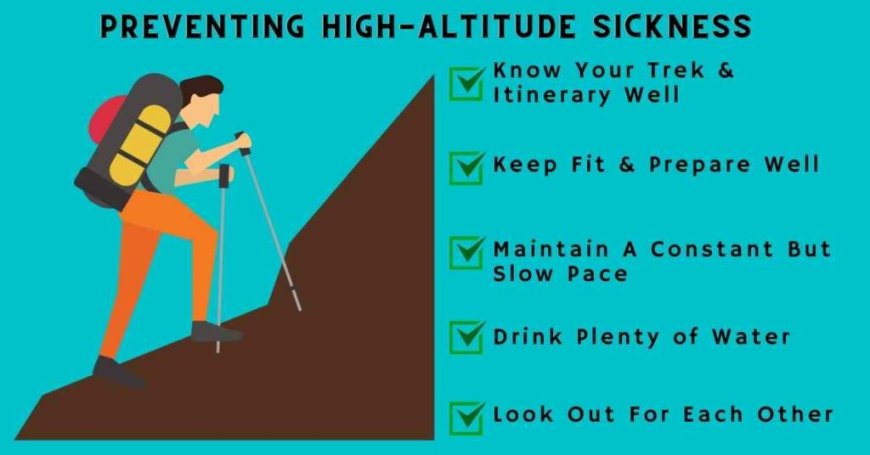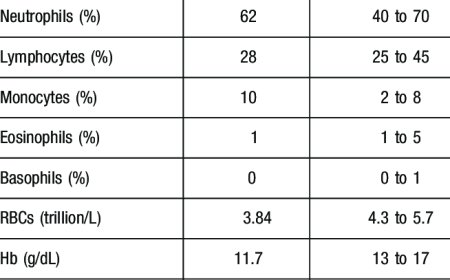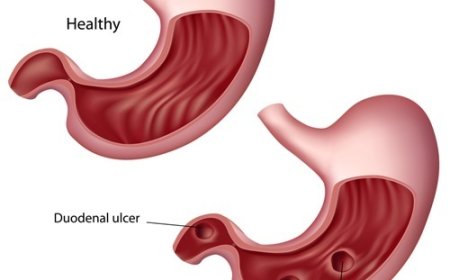High Altitude sickness

Introduction:
High up in the sky, where the clouds touch the mountains, lies a breathtaking world of adventure and beauty. But in this lofty realm, some travelers may experience a mysterious condition called High Altitude Sickness. Let's embark on a journey to understand this condition, its symptoms, causes, risk factors, types, diagnostic tests, treatments, and prevention techniques.
What is High Altitude Sickness?
High Altitude Sickness, also known as Acute Mountain Sickness (AMS), occurs when individuals ascend to high altitudes too quickly, such as mountain climbing or trekking in regions above 8,000 feet (2,500 meters). At such heights, the air contains less oxygen, making it difficult for our bodies to adjust to the changes, leading to AMS.
Signs and Symptoms:
High Altitude Sickness can bring discomfort to adventurers. Symptoms usually appear within 12 to 24 hours after reaching high altitudes. Common signs include:
- Headache: A persistent, throbbing headache is one of the first symptoms.
- Nausea and Vomiting: Feeling queasy or vomiting due to the altitude.
- Dizziness and Fatigue: Feeling lightheaded and tired more than usual.
- Shortness of Breath: Difficulty in breathing, especially during physical activity.
- Rapid Heartbeat: A faster heartbeat, even at rest.
- Sleep Disturbances: Difficulty falling asleep or waking up frequently during the night.
How is High Altitude Sickness Classified?
High Altitude Sickness can be classified into three main types based on its severity:
-
Acute Mountain Sickness (AMS): The mildest form, with symptoms like headache and nausea.
-
High Altitude Pulmonary Edema (HAPE): In more severe cases, fluid accumulates in the lungs, leading to breathing difficulties and coughing.
-
High Altitude Cerebral Edema (HACE): The most dangerous type, where fluid builds up in the brain, causing confusion, hallucinations, and loss of coordination.
Causes and Triggers:
The primary cause of High Altitude Sickness is the reduced availability of oxygen at high altitudes. When we ascend too quickly, our bodies struggle to adapt to the changes in atmospheric pressure and oxygen levels. This triggers the symptoms of AMS.
Risk Factors with Examples:
Certain factors increase the risk of developing High Altitude Sickness, including:
-
Rapid Ascent: Climbing mountains too quickly without giving the body time to adjust. Example: Rushing to reach the mountain peak without proper acclimatization.
-
Altitude Level: The higher the altitude, the greater the risk. Example: Climbing Mount Everest, the world's highest peak, can be more challenging due to its extreme altitude.
-
Individual Health: People with certain medical conditions, like heart or lung problems, are at higher risk. Example: Someone with asthma attempting high-altitude trekking without medical guidance.
Types of High Altitude Sickness:
Let's delve deeper into each type of High Altitude Sickness:
-
Acute Mountain Sickness (AMS): This type affects most travelers at high altitudes. The symptoms are usually mild and can be managed with rest and proper acclimatization.
-
High Altitude Pulmonary Edema (HAPE): This occurs when fluid accumulates in the lungs, making breathing difficult. HAPE requires immediate medical attention and descent to lower altitudes for treatment.
-
High Altitude Cerebral Edema (HACE): The most severe form, where fluid accumulates in the brain, causing confusion and disorientation. HACE is a medical emergency, and immediate descent and medical care are necessary.
Diagnostic Tests and Treatments:
To diagnose High Altitude Sickness, doctors may use the following tests:
-
Physical Examination: The doctor will check for symptoms and assess the person's overall health.
-
Oxygen Saturation Measurement: A small device, like a pulse oximeter, measures the oxygen levels in the blood.
-
Chest X-ray: This helps diagnose High Altitude Pulmonary Edema (HAPE).
Treatments include:
-
Rest and Acclimatization: Giving the body time to adjust to the altitude can relieve mild AMS symptoms.
-
Oxygen Therapy: Providing supplemental oxygen helps alleviate symptoms and maintain oxygen levels.
-
Descent: For severe cases like HAPE and HACE, immediate descent to lower altitudes is crucial for treatment.
Complications and Prevention Techniques:
High Altitude Sickness can lead to severe complications if not addressed promptly. Complications include HAPE and HACE, which can be life-threatening.
To prevent High Altitude Sickness:
-
Gradual Ascent: Climb gradually, allowing the body to acclimatize to the changing altitude.
-
Hydration: Drink plenty of water to stay hydrated at high altitudes.
-
Adequate Rest: Take sufficient breaks during the climb and get enough sleep at night.
-
Avoid Alcohol and Smoking: Alcohol and smoking can worsen AMS symptoms, so it's best to avoid them.
High Altitude Sickness is a challenging condition that adventurers may encounter when exploring India's majestic mountain peaks. By understanding the signs, taking precautions, and seeking timely medical attention, adventurers can continue to enjoy the beauty of high-altitude landscapes while keeping themselves safe and healthy. Remember, the mountains are calling, but safety should always come first!
What's Your Reaction?
 Like
0
Like
0
 Dislike
0
Dislike
0
 Love
0
Love
0
 Funny
0
Funny
0
 Angry
0
Angry
0
 Sad
0
Sad
0
 Wow
0
Wow
0









































































